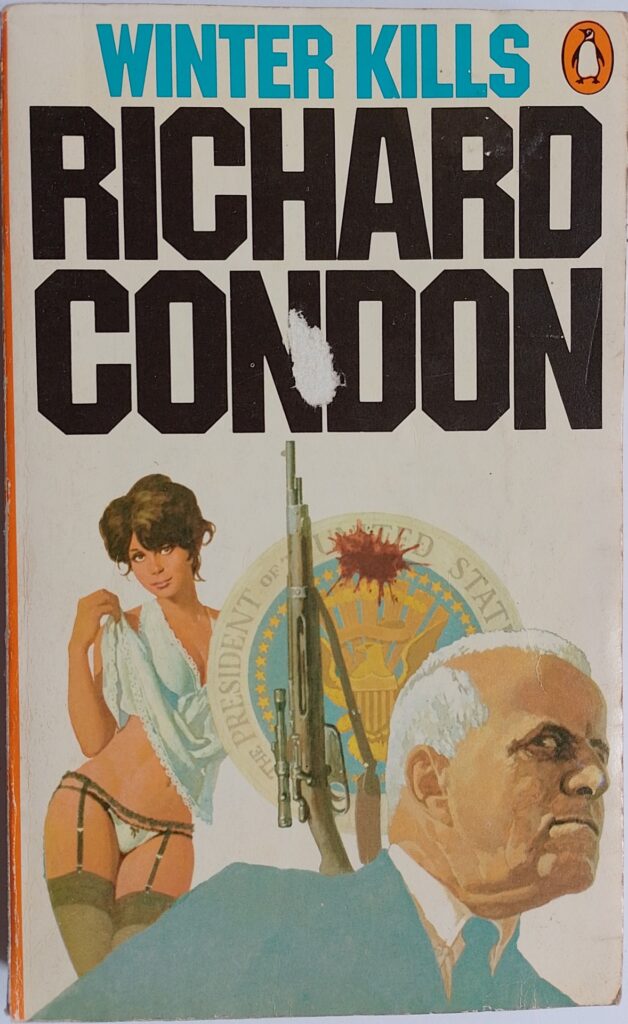First published 1974. Penguin, paperback, 1976, pp 288, c.110,000 words.
Condon was a hugely successful writer, and quite a few films have been made from his books, notably at least two versions of The Manchurian Candidate. His books are unashamedly pieces of Americana.
This book is a riff on the Kennedy assassination, and it throws every conspiracy theory dreamt up around that event into the melting pot: big business, military-industrial interests, the mafia, Hollywood, discarded girlfriends. Everyone here is larger than life: billionaires and hick sharp-shooters, mad professors with incredible data archives, super-tough oil men, corrupt cops and generals, all the (few) women are beautiful and sexy (and sexually available to the men). There is much violence, with witnesses being casually wiped out, guns abound, but anything really nasty happens off stage. Condon is fully aware of the over-the-top nature of his writing, talking of melodrama and how ‘we all live in a movie, or worse, in a mid-morning TV soap outcry.’ [p47]
This is mostly set in 1974, and the savagery of New York City at that time is well captured in a scene where the protagonist has to fight for a taxi on a rainy evening; no one wants to share because they are terrified that a stranger might knife them. [p121] He is also good with a hard-boiled aphorism: ‘on this bummer through a fun-house of American myths’ [p164], or ‘on the inside, oligarchies are mutually feuding structures, right?’ [p172], or ‘after all money is to buy not bless’ [p203]
He uses a few words that are unfamiliar to this reader like ‘epergne’ [p49], ‘swole’ [p240], and ‘callid’ [p242], but understanding the intention was either clear from the context or irrelevant to the story. Otherwise Condon writes fluently, in a very accessible style. High end food and drink is lovingly described and in unnecessary detail, as are branded cars and aeroplanes (hints of the James Bond books). The story’s structure is confusing with frequent swings between the past (mostly the assassination) and the present (the investigation, fourteen years later.) It is also unclear sometimes how much the narrator is relating as history and how much a character is telling a story; but perhaps that is part of the fun – trying to separate truth from lies. To a degree that is Condon’s message: we, the peasantry, are all being manipulated all the time by those in power, always spinning a narrative to suit themselves. The mighty dollar ultimately rules.
The cover of this edition is very 1970s, and would be unthinkable for a book published today. It shows a blood-spattered seal of the president of the United States, a rifle, a grim-faced, silver haired man and a sexily posed young woman in underwear. Incidentally, there is not a lot of sex in the text: only one quite short but moderately erotic scene, which, rather typical of the book, has the male character’s moral compass swinging wildly in the breeze of events and the ‘dame’ in front of him.
Putting away the critical lens and this is a jolly romp, a humorous and entertaining thriller.
© William John Graham, September 2022

